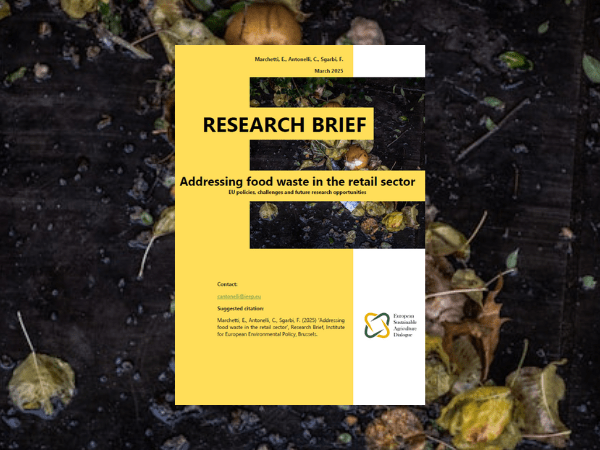AUTHORS: Elena Marchetti, Chiara Antonelli, Federico Sgarbi
One of the biggest inefficiencies of the agri-food chain is food waste, a fast-growing phenomenon whose very existence seriously challenges planetary boundaries. One-third of all globally produced food is wasted, which translates into 1.3 billion tonnes of wasted resources per year. As a result, food waste accounts for 8% of greenhouse gas (GHG) emissions produced by humankind, making it comparable to road transport pollution. As a cause of negative economic, environmental and social effects, food waste is thus among the sustainability issues that need addressing.
While the revision of the cornerstone of EU waste management policies, the Waste Framework Directive 2008/98/EC is ongoing, the amendments place a heightened focus on food and textile waste, reflecting the EU’s dedication to mitigating environmental impacts across these sectors. The EU needs a strong commitment to halve food waste by 2030. EU actions are not limited to the Farm to Fork Strategy and other relevant policies (Biodiversity Strategy, Bioeconomy Strategy, Circular Economy Action Plan, and Common Agricultural and Fisheries policies), but also several initiatives related to research programmes aiming at reducing food waste production. These prove to be crucial to address the externalities generated by food waste, which are not only environmental but economic and social as well.
Most food waste occurs not just in households but primarily in the retail sector and food services, which include bars, supermarkets, events, and mass-catering establishments. The retail sector alone generates 13% of global food waste, making it a key area for reducing waste throughout the entire food supply chain. Retailers play a significant role in mitigating food waste, particularly in Western economies.
The European food system can be visualised as an hourglass: the upper part represents producers and manufacturers, while the lower part represents consumers. The narrow middle section is the retail sector, characterised by a high level of market concentration that controls the flow of food from producers to consumers. Consequently, large retailers hold substantial market power, enabling them to instigate changes in the food system that impact both producers and consumers.
To tackle the externalities of food waste, especially at the retail and consumption levels, market-based measures are crucial. However, implementing market incentives and retailer practices to combat food waste faces several challenges. The primary obstacles include:
- Lack of data
- Technological limitations
- Illegal dumping
- Resistance from stakeholders
Addressing these issues requires coordinated efforts among stakeholders, improved data collection, and robust policies for enforcement. Based on the evidence gathered, there are specific areas within food waste mitigation that require further research and may or may not be covered in current funding projects. The most pertinent areas identified include exploring new technologies for food preservation, enhancing data analytics for better demand forecasting, and promoting sustainable consumption practices. Additional funding and support for research in these areas are essential to make significant progress in reducing food waste.
Brief’s cover photo by Del Barrett on Unsplash

